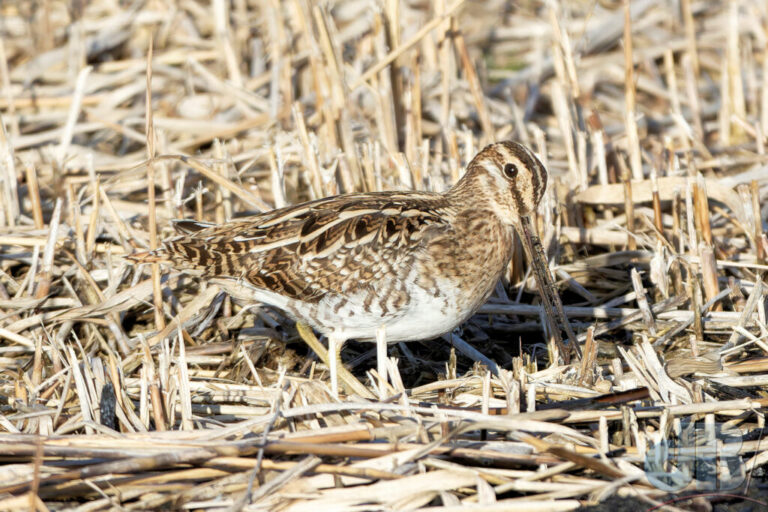TL:DR – Tens of thousands of Knot murmurate over The Wash visible from the north Norfolk and Lincolnshire coasts.
We spent the night in North Norfolk, tried to have an early night at a cheap hotel, and were up well before dawn to get to Knots Landing (RSPB Snettisham). We hoped to be in plenty of time for the high tide and the potential for a Wader Spectacular. We, and dozens of other green-clad, enthusiasts were not disappointed.
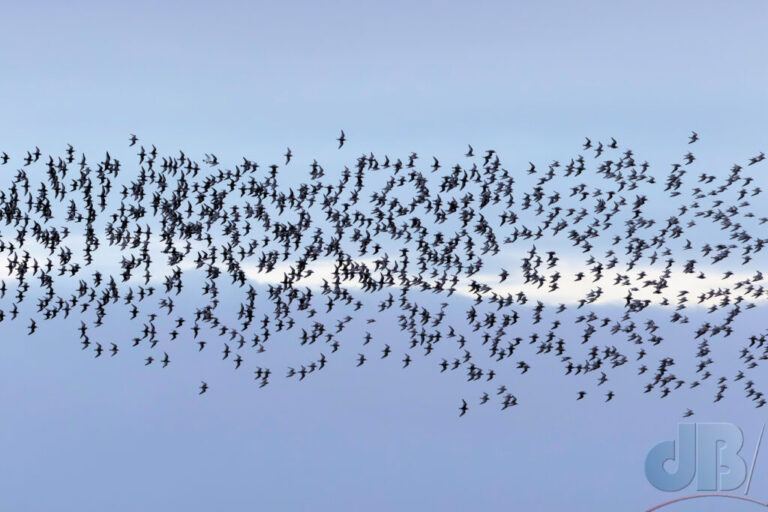
The weather was damp and drizzly and very cold and we got soaked through, but we witnessed tens of thousands of Knot (Calidris canutus) murmurating over the advancing tide as we headed for the landing site.
Most have at this point already been pushed off the deluged mudflats of The Wash, their low-tide feeding grounds, and into the air. Within minutes, the murmurs flood the banks of the inland lagoons with birds crammed tightly together to ride out the high tide. They wait patiently for a distant trigger that calls them once the ebbing tide retreats along the muddy shoreline.
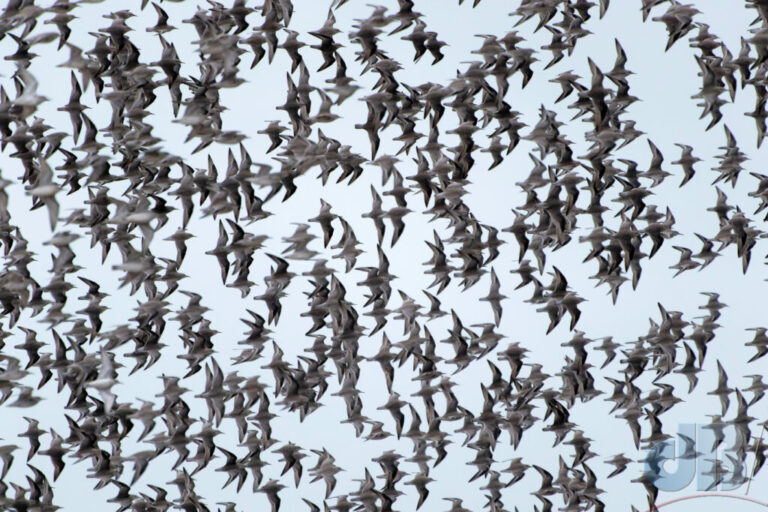
As the tide turns, they flock back to sea, murmurating along the way – strength in numbers – to confuse any preying Peregrines. Ultimately, the seem lost to the waves but are merely gone from view.
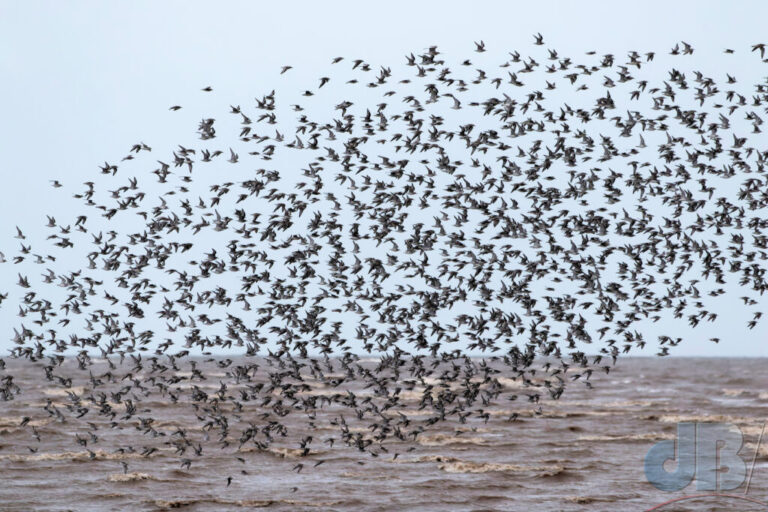
This is not the first time we’ve seen the Knot murmurations, although it is the first time we’ve made a special trip to catch them at a dawn high tide. We visit the area often and have seen these wondrous flocks on numerous occasions and caught one wader spectacular just as the sun was setting a few years ago. Always amazing to watch the sun set over the sea when one is ostensibly on England’s east coast. You’ll have to look at the map for Snettisham, Norfolk to see how that can be. (Video from 2018 visit here).
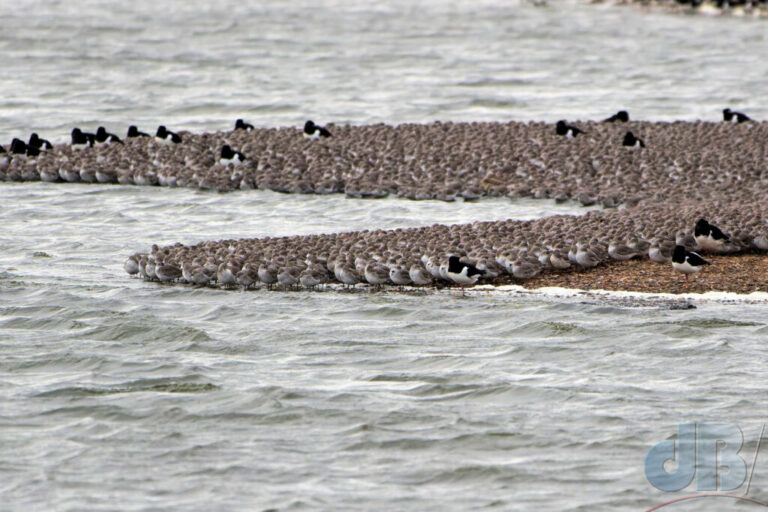
The bird’s name comes from the name of the King who demonstrated his fallibility to his subjects by failing to turn back the tide – King Cnut – better known to us Brits as King Canute. The bird’s scientific name is Calidris canutus. Kalidris, or skalidris, was a word used by Aristotle to describe various grey-coloured shore birds, waders. The (Red) Knot, C. canutus, is the “type species” of the genus, although unusually does not have a tautonym (it would have been Calidris calidris).
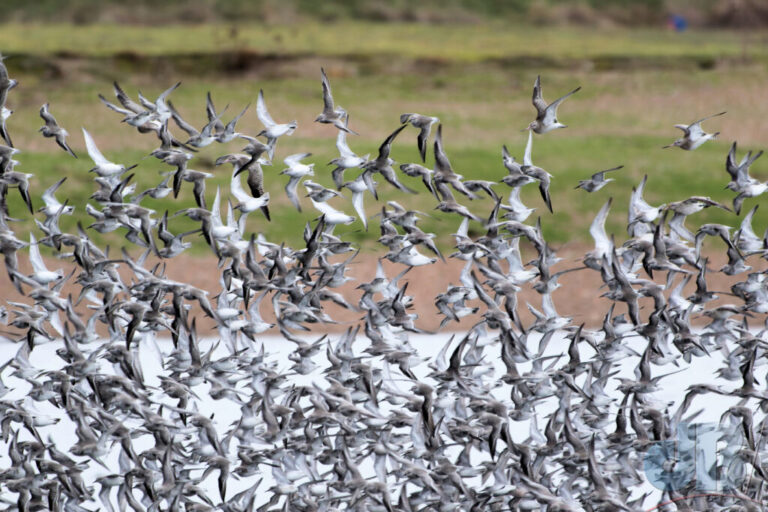
Meanwhile, on the same trip taking in a visit to nearby RSPB Titchwell we also clocked Avocet, Bar-tailed Godwit, Black-headed Gull, Black-tailed Godwit, Brent Geese, Chaffinch, Common Gull, Cormorant, Curlew, Dunlin, Gadwall, Golden Plover, Goldfinch, Great Black-backed Gull, Grey Plover, Greylag Geese, Herring Gull, Lapwing, Linnet, Mallard, Marsh Harrier, Meadow Pipit, Mediterranean Gull, Mute Swan, Peregrine Falcon, Pintail, Redshank, Red Kite, Reed Bunting, Robin, Sanderling, Shelduck, Shoveller Duck, Skylark, Snipe, Spoonbill, Teal, Turnstone, Water Pipit, Wigeon, Wren, and others.
